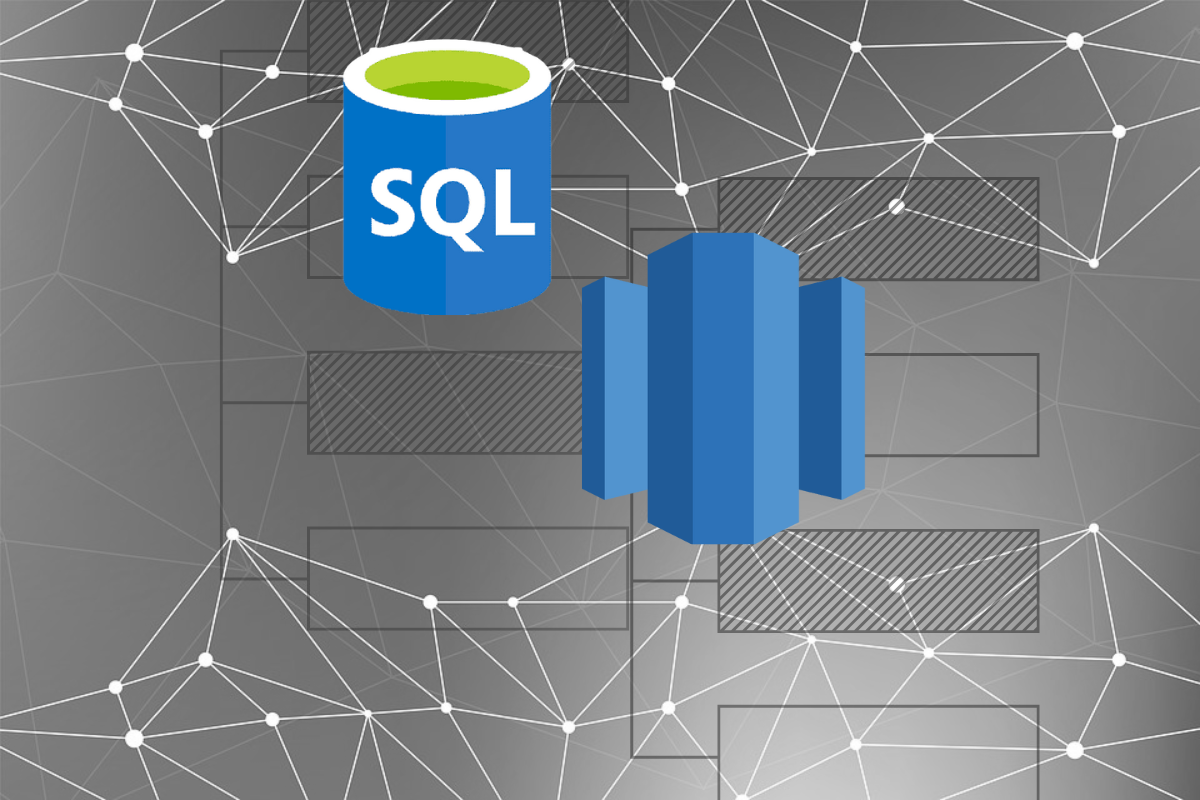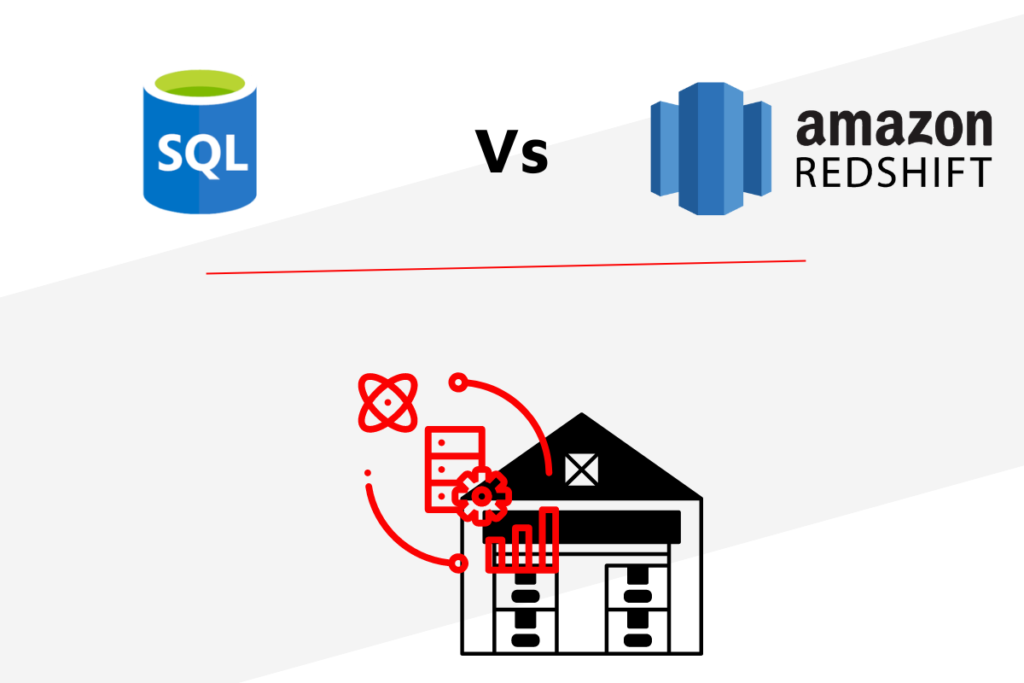Data Warehousing Architecture: Azure SQL vs Redshift
10 October 2022 | Noor Khan

There are quite a few different data warehouse technologies to choose from, and knowing where to start, what to look for, and what data warehouse service is going to be best for your business is key. Deciding on a data warehousing technology that is suitable to your business needs, goals and objective is essential as it will have long-term implications, whether that’s positive or negative.

In this article, we will look at the two leading data and cloud computing technologies offered by the biggest names in technology. Azure SQL and AWS Redshift are two technologies which are popular when architecting data warehouses. Ardent’s engineers are proficient in both have delivered several data warehousing projects for clients using these leading technologies.
Data warehousing with Azure SQL
Azure SQL is a managed Data Warehouse-as-a Service (DWaaS) provided by Microsoft. It acts as a federated repository for data, which is collected by a business’s operational systems. The architecture of the data warehouse is based on the latest general release of the SQL server, and can be used by data analysts, data scientists, and end-users to run queries, process information, and examine metric data.
Pros and Cons of Azure SQL
There are a number of benefits and limitations of using Azure SQL for warehousing your data. Benefits:
- Scalable computing power
- Full compliance with PCI-DSS, SOX, and HIPAA standards/regulations
- Built-in Threat Detection
- Makes use of Azure cloud compute and storage resources
- Microsoft is a trusted brand for system management
- Suitable for enterprise-level data warehousing
Limitations
- Moving data into the cloud can be difficult
- Some functions are considered outdated and only work through the ‘Classic’ portal
- Only supports up to 32 connections at a time
Read about Ardent being a Microsoft Gold Partner and what it means for you.
Data warehousing with AWS Redshift
Redshift is an Amazon product that provides a petabyte (PB) scale data warehouse service that operates with cloud technology. The warehouse service is fully managed and can be scaled to allow growth for new insights and customers. Based on PostgreSQL, the platform offers a high level of flexibility and can integrate with most third-party platforms with its JDBC and ODBC drivers.
Pros and Cons of Redshift
Each technology has a number of key benefits and some limitations you should consider.
Benefits:
- High-performance standards
- Flexible scalability and room for data growth
- Wide selection of easily administered tools for automation
- Widely supported querying tools
- Offers columnar storage
- RBAC encryption and SSL connections
- HIPAA, SOC2 Type II, Fed ramp, and PCI certified
Limitations
- Does not provide a multi-cloud solution
- Concurrent execution can cause performance problems
- Is not based on a serverless architecture
Read about Ardent being a certified AWS partner and what that means for you.
Key differences between Azure SQL and Redshift for data warehousing
When looking at Azure SQL and AWS Redshift for data warehousing, your specific data needs, database set-up, operational requirements, and familiarity with the platforms, will largely influence how you make your decision.
Scalability
There are lots of elements to consider, for example, when it comes to scalability, Redshift cluster modification is done through a management console or an API, with the changes immediately applied. With the Azure SQL data warehouse, scaling of clusters can be done through compute and storage units independently and can take minutes to be applied.
Indexing
For Indexes, Azure supports all SQL concepts (indexes, stored procedures, user-defined functions), whereas Redshift supports two kinds of sort keys (compound and interleaved).
The differences between the two platforms are largely in functionality and operation, which can make deciding a challenge if you are not familiar with the intricacies involved, and seeking expert advice and assistance is highly recommended.
Ardent data warehousing services
Ardent engineers work with a number of world-leading technologies to deliver robust, highly scalable and accessible data warehouses for our clients. Azure SQL and AWS Redshift are just some of the technologies we have employed for data warehousing. If you are looking to build a data warehouse and are unsure of the right data warehousing technology stack for your business, data and objectives, we can help. Let’s set up a quick discovery call to discuss your challenges to finding a data warehousing solution that is right for you.
Explore our data warehousing services or our data engineering services.
Ardent Insights

Are you ready to take the lead in driving digital transformation?
Digital transformation is the process of modernizing and digitating business processes with technology that can offer a plethora of benefits including reducing long-term costs, improving productivity and streamlining processes. Despite the benefits, research by McKinsey & Company has found that around 70% of digital transformation projects fail, largely down to employee resistance. If you are [...]
Read More... from Data Warehousing Architecture: Azure SQL vs Redshift

Stateful VS Stateless – What’s right for your application?
Protocols and guidelines are at the heart of data engineering and application development, and the data which is sent using network protocols is broadly divided into stateful vs stateless structures – these rules govern how the data has been formatted, how it sent, and how it is received by other devices (such as endpoints, routers, [...]
Read More... from Data Warehousing Architecture: Azure SQL vs Redshift

Getting data observability done right – Is Monte Carlo the tool for you?
Data observability is all about the ability to understand, diagnose, and manage the health of your data across multiple tools and throughout the entire lifecycle of the data. Ensuring that you have the right operational monitoring and support to provide 24/7 peace of mind is critical to building and growing your company. [...]
Read More... from Data Warehousing Architecture: Azure SQL vs Redshift






